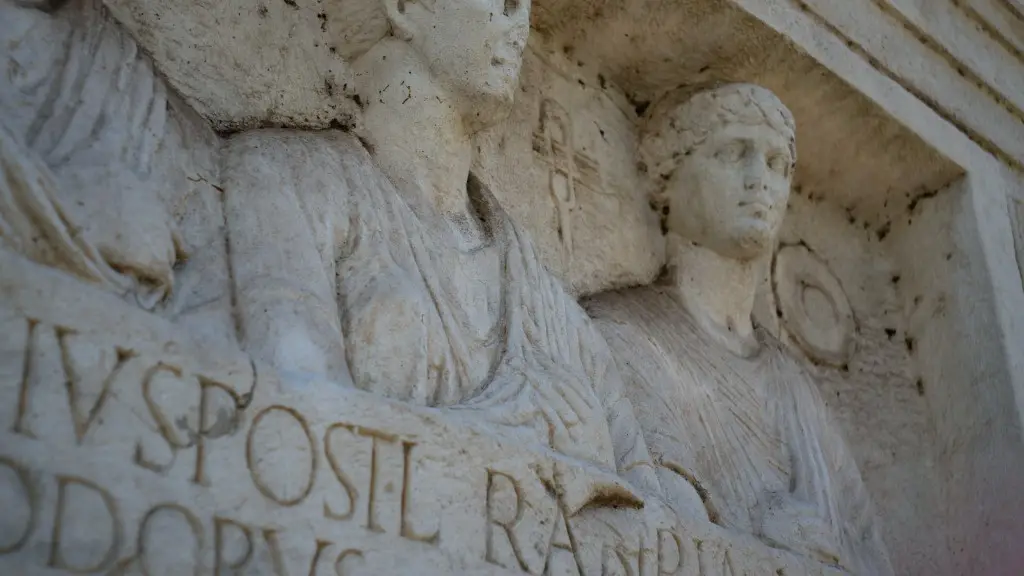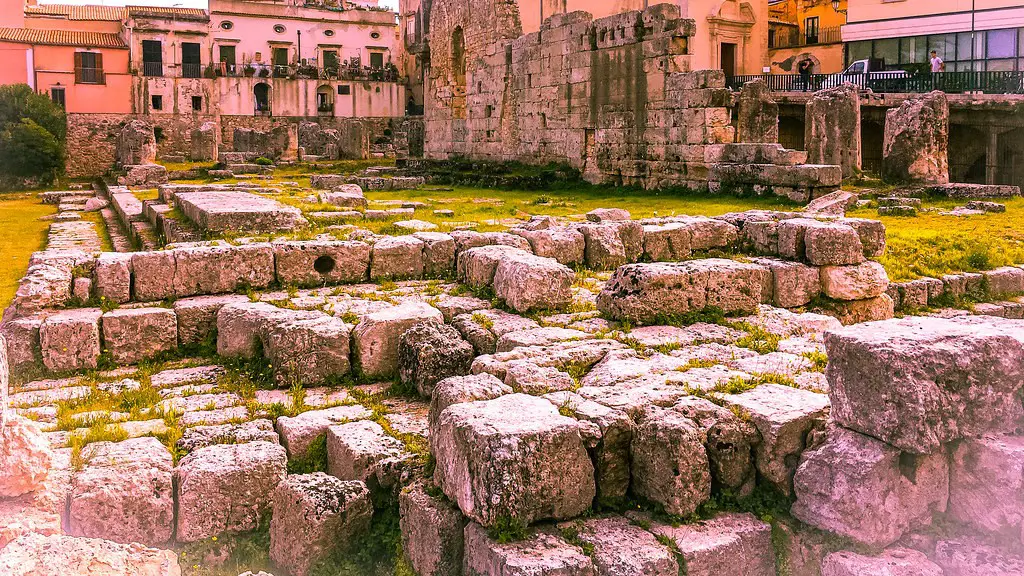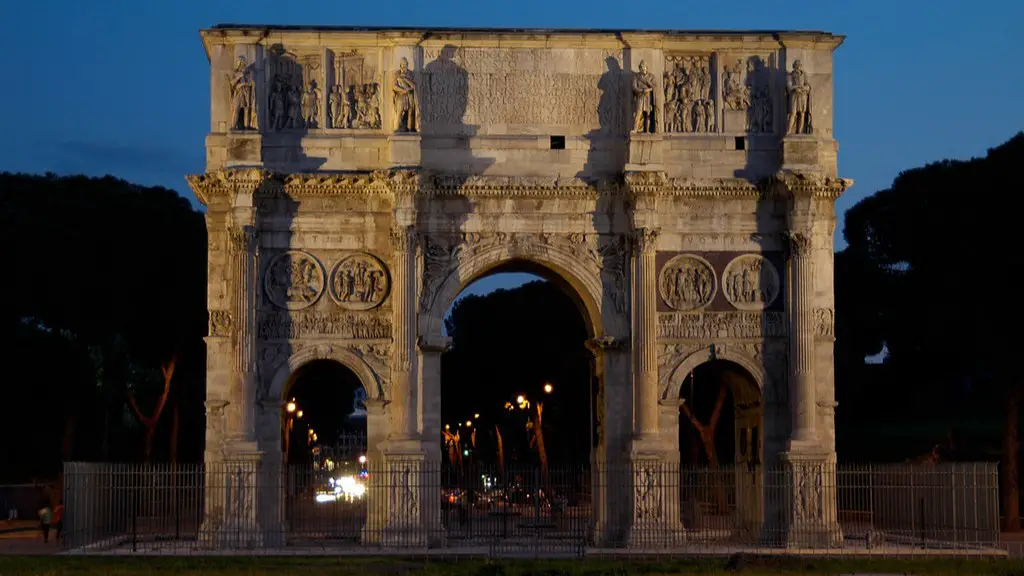In ancient Rome, the climate was Mediterranean, which means that it was hot and dry in the summer and cool and wet in the winter. The Mediterranean climate is caused by a combination of the warm air from the Sahara Desert and the cold air from the snow-capped mountains.
The climate in ancient Rome was mild, with temperatures averaging in the mid-60s Fahrenheit. There was little variation from season to season, and rainfall was plentiful. The city was located near the Mediterranean Sea, which helped to moderate the climate.
What was ancient Rome weather like?
The climate of Ancient Rome was characterized by cool summers and mild, rainy winters. At the same time, there were a number of drastic winters, including the complete freezing of the Tiber in 398 BC, 396 BC, 271 BC and 177 BC.
Rome’s Mediterranean climate means that it has cool winters and warm to hot summers. Temperatures can vary widely, with lows of 2°C in January and highs of 30°C in July and August. This climate is perfect for growing olives and grapes, which are two of the main crops grown in the region.
What was the physical environment and weather like in ancient Rome
The climate in the region is very conducive to agriculture, which is why it has been able to develop a strong agricultural base. The mild winters and hot, dry summers make it possible to grow a variety of crops, including wheat, grapes, and olives. This abundance of food has helped to support the population and has allowed Rome to prosper.
According to a new study, the Mediterranean Sea was 36°F (2°C) hotter during the Roman Empire than other average temperatures at the time. This 500-year period, from AD 1 to AD 500, was the warmest period of the last 2,000 years in the almost completely land-locked sea. The study claims that the Roman Empire coincided with this warm period, and that the warm weather may have contributed to the Empire’s success.
How did Romans stay warm?
The ancient Romans were very innovative when it came to keeping their homes warm. They had the earliest-known forms of central heating, space heaters, hot toddies, and a simple strategy of moving toward the sun. All of these methods helped to make the homes of the ancient Romans more comfortable and inviting.
Rome is surprisingly humid and this can often make 32C degrees feel much hotter than you expect. Be sure to stay hydrated and take breaks if you start to feel too hot.
Was ancient Rome Hot or cold?
Ancient Rome’s climate was definitely on the warmer side, especially during the summer months. However, it was still a far cry from the blistering heat that we experience today. The average temperatures during the day were around 30˚C, and 18˚C at night. This climate is definitely a lot more bearable than the harsh conditions we experience during the summer months today.
The climate in the northern regions of Italy is temperate, while the climate in the rest of the country is subtropical. This means that the northern regions are cooler than the rest of the country, and that the annual snowmelts can cause small rivers to overflow and flood the terrain. Tuscany and the Pontine Marshes are two regions that are especially prone to flooding.
How did ancient Rome adapt to their environment
The ancient Roman civilisation was famous for its many great engineering feats, one of which were the aqueducts. These aqueducts were able to transport clean water hundreds of miles away from its source to the various population centres. This was a great boon to the people living there as they now had access to clean water, something which was otherwise very rare. However, only the wealthy could afford to use these aqueducts as they were quite expensive to maintain.
Winters in Rome were typically mild and wet, with some cold nights. However, there were some harsh winters with snow and ice. The River Tiber froze in the years 398 BC, 396 BC, 271 BC and 177 BC.
What was average life like in ancient Rome?
The average citizen in the Roman Empire worked hard and lived in modest housing. Despite the riches of the empire, the largest class lived in poverty. Roman children wore pendants called bullas, from the Latin word for “bubble,” around their necks.
Roman civilization prospered during a time of stable, warm, and wet weather. Climate change, however, brought about the empire’s demise.
What was the hottest era in Earth’s history
One of the warmest times in Earth’s history was during the geologic period known as the Neoproterozoic, between 600 and 800 million years ago. Conditions were also frequently sweltering between 500 million and 250 million years ago. These periods of extreme heat were likely caused by greenhouse gases like carbon dioxide and methane trapping heat in the atmosphere.
You might think that having a latrine and fountain on the ground floor of an apartment building would stop the residents on the upper floors from dumping their waste onto the street. However, there was no street cleaning service in Rome, so the neighborhoods were plagued with disease.
How brutal was ancient Rome?
The Romans were a warlike people and their identity was deeply rooted in violence. Images of war and violence were ubiquitous in the Roman world, and the myths and history of Rome were full of brutal acts of rape, fratricide and war. The Romans glorified their military achievements and regarded war as a noble enterprise. It was not uncommon for Roman generals to celebrate their military victories with public displays of violence, such as the executions of captured enemy soldiers.
In the Roman Empire, women wore breast bands to prevent their breasts from sagging as they got older. In the 16th century, some form of breast support was invented in the form of corsets. Corsets have been used since then to support the breasts and give them a more youthful appearance.
Warp Up
The climate in ancient Rome was mild and wet. The average temperature was around 20 degrees Celsius (68 degrees Fahrenheit). Rome generally had enough rainfall to support farming. The summers could be quite hot, and the winters could be quite cold.
Rome’s climate was mainly hot and dry due to its location. The city was located in the Mediterranean Basin, which is an area that generally has a climate that is warm anddry. The Mediterranean Basin is an area that is located around the Mediterranean Sea. The sea has a moderating effect on the climate, which makes the climate in this area ideal for growing olives and grapes.




